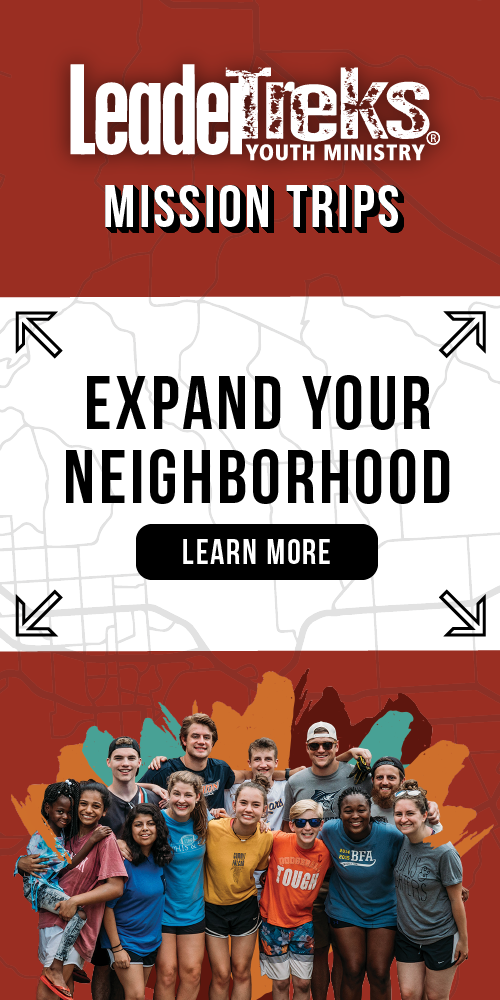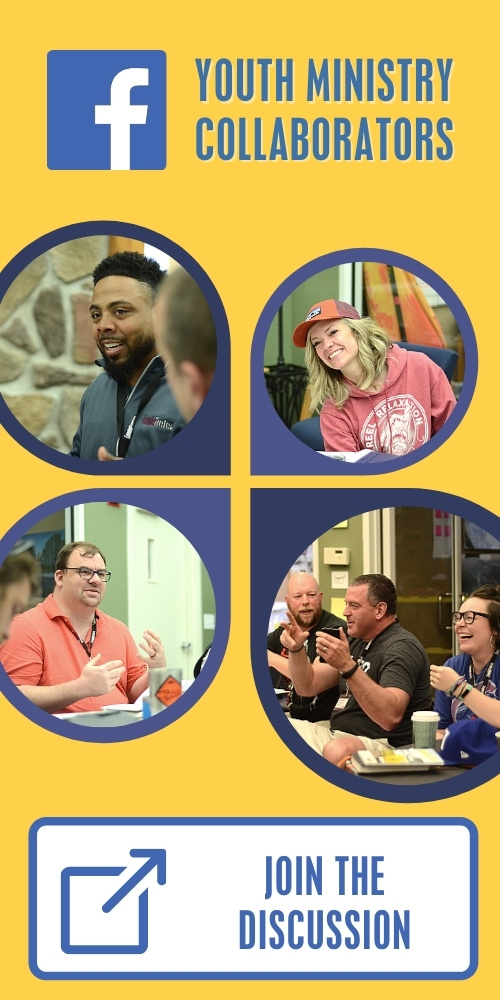Inviting the Outsider In
By Danielle Rhodes
I was an outsider. I dreaded Wednesday nights and would do anything to get out of going to youth group (most of my attempts failed). My family had moved churches when I was a freshman in high school, and I suddenly found myself in a group of 200 strangers. I admit I could have tried a little harder. Maybe I should have made more of an effort to insert myself into the “core” group of teens. Maybe I should have endured the awkward, “Don’t I know you from somewhere?” situations. But I didn’t. Sadly, over the next four years, I never felt like I belonged in that youth ministry.
You can spot them in any group. They come in quietly, perhaps a little late, and sit alone in the back. They refuse to answer questions or volunteer for activities. And when the evening is done, they don’t linger to socialize. These students are content on the fringe, sitting on the outside looking in and never engaging in the ministry around them.
Try as we might, they are the hardest students to reach and, often, the ones most easily forgotten. It is so easy to give up and only invest in students who want to engage. But in the back of our heads, we can’t shake the conviction that Jesus had a special place in his ministry for the marginalized, the outcast, the outsiders. So how do we, as youth workers, support and engage the students wandering on the outskirts of our communities?
Nearly every youth ministry seeks to cultivate community. We plan small groups, lock-ins, game nights, and retreats throughout the year, all in hopes of engaging students in community. Yet to reach those outsider students, we can’t neglect two elements of these events: invitation and diversity.
Invitation
Psychologist Abraham Maslow developed a theory of motivation in which he described the “hierarchy of human needs.” These are things every person needs to survive in the world, and then, to thrive. These needs, from the most basic to the most complex are:
- Physiological—health, air, nutrients, sleep
- Safety—freedom from danger and chaos
- Belonging—acceptance, fitting in with a group of friends and family
- Esteem—feeling good about yourself through achievements, independence, self-respect, and respect from others
- Self-actualization—recognizing your potential, self-fulfillment
Think of them like a ladder—you can’t reach a higher level until you have accomplished the lower levels. For instance, it would be useless to attempt to boost a student’s self-esteem with a pat on the back or a high five (fourth level) if that student didn’t know where they would find their next meal (first level).
With that in mind, think about the third level, the need to belong. Often we write these students off as having low self-esteem or being standoffish. However, when we look at Maslow’s hierarchy, self-esteem can only flourish if a student first feels like he or she belongs, and that requires a welcoming environment.
As simple as this may sound, invite the outsiders in. Go beyond a general invitation to the group and seek out these students individually. Challenge your core student leaders to reach out these students, and personally invite them to engage—not in a condescending or patronizing way, but because they genuinely want to involve the outsider students. Many people find it intimidating to go to new experiences alone, so set up carpools or pick up the students yourself (as long as your church policy allows for this). It is hard to keep feeling unaccepted when someone goes to such measures to help you feel like you belong.
Diversity
In high school, my youth group had lots and lots and LOTS of events. But as I look back, they blur together because they all fell into a similar event type. Most youth events can be lumped into three basic types: the fun events (lock-ins and game nights), the formation experiences (small groups and retreats), and the service projects (community work days and missions trips).
My husband comes from a long line of farmers. He experienced the greatest amount of unity with his family when they were working together. As a student, he felt the most accepted by his church community when he was interacting alongside them on a service project. I, on the other hand, felt the most accepted in my family after meals, when we were doing nothing but sitting and talking with each other. As a student, I longed for a similar experience, a small group where I could truly know the people sitting across from me and they could know me.
It’s hard to predict what type of experience will shift a student from feeling like an outsider to feeling welcomed and accepted. So think about how you structure your youth group. Are your youth events 90 percent fun with a few minutes of small group time at the end (that always get cut off short because of time)? Or do you have only one mission trip a year that only a few students can afford? Unless you diversify your events and provide opportunities for every personality type to build community, you will find it difficult to invite the outsiders in.
CC Image courtesy Lee Morley on Flickr.
About the Author
Guest Contributor
The LeaderTreks Blog is proud to share the hard-earned wisdom of student ministry leaders from many different backgrounds and professions. From time to time, we will feature guest blog posts from writers other than our regular contributors. We include these posts to provide additional perspectives and insight that we’re sure will help develop you and your ministry… Read More




